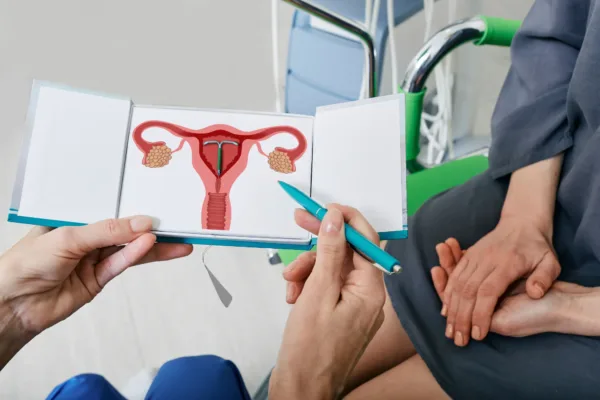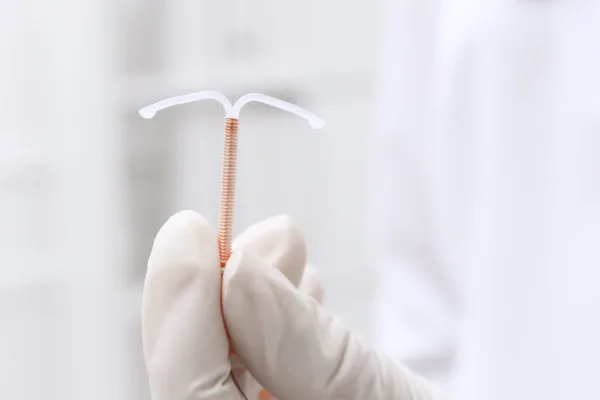
What is Long-Acting Reversible Contraception (LARC)?
Long-acting birth reversible contraception (LARC) prevents pregnancy without daily maintenance. Two main types of LARC are available: IUDs that go into the uterus and implants that go under the skin of the arm. Both work for several years, but can be removed when you want to get pregnant. You don’t need to think about these methods every day or every time you have sex.
Benefits of Long-Acting Reversible Contraception
LARC is an attractive option because it is:
- High effectiveness: LARC methods are over 99% effective in preventing pregnancy.
- Low maintenance: Unlike daily pills or frequent injections, LARC methods require minimal upkeep once in place.
- Reversibility: Fertility typically returns quickly after removal, making LARC suitable for individuals planning future pregnancies.
- Cost-effectiveness: While the initial cost may be higher, LARC often saves money over time compared to other contraceptive methods.
Discussing these benefits with a doctor can help you decide if LARC aligns with your lifestyle and needs.
Types of LARC
Intrauterine Devices (IUDs)
IUDs are small, T-shaped devices placed in the uterus to prevent pregnancy. They come in two main types:
- Hormonal IUDs: These release progestin, a hormone that thickens cervical mucus and thins the lining of the uterus to block sperm and prevent implantation. They sometimes prevent ovulation. Hormonal IUDs are effective for 3–8 years, depending on the brand you pick.
- Copper IUDs: These are hormone-free and use copper to create a chronic inflammation in the uterus that inhibits sperm and prevents implantation. Copper IUDs can last up to 10 years.
Getting an IUD inserted takes about 15 minutes. You may feel cramping during placement, like strong period cramps. Most women say the brief discomfort is worth the years of worry-free birth control.
We try to minimize discomfort and anxiety with the insertion process. We can pretreat with medications to soften the cervix and prevent cramping. We offer nitrous oxide ( laughing gas) which is quickly reversible allowing you to still drive yourself home. We can do a numbing block and we can even insert IUDs under IV sedation. Don’t let fear of insertion prevent you from exploring the option of an IUD.
Contraceptive Implants
The contraceptive implant is a thin, matchstick-sized flexible rod inserted under the skin of the upper arm. The implant releases a steady dose of progestin to prevent ovulation and thicken cervical mucus. Implants are effective for up to 3 years and are a discreet option for those seeking a “set-it-and-forget-it” solution.
Getting and removing the implant takes about 5 minutes at your doctor’s office. Once placed, you can’t see the implant under your skin, but you can feel it if you touch it. You don’t need to do anything else for birth control during those 3 years.
Choosing the Right LARC Optio
 Selecting a LARC method depends on individual preferences, medical history, and lifestyle. Factors to consider include:
Selecting a LARC method depends on individual preferences, medical history, and lifestyle. Factors to consider include:
- Duration of effectiveness: Some may prefer longer-lasting options but all of these can be removed with a quick return of fertility.
- Hormonal or non-hormonal preference: Hormonal IUDs and implants provide additional benefits like reduced menstrual bleeding, while the copper IUD is a hormone-free alternative that does not help menstrual pain or bleeding.
- Medical considerations: Certain health conditions may make one option more suitable.
A healthcare provider can guide you through these considerations to help you make an informed choice.
Addressing Common Concerns
Many want to know if these methods are safe and what to expect. Here’s what you should know:
- Getting it placed: You may feel cramping when getting an IUD, like strong period cramps. We offer many options for pain and anxiety control from numbing medications to nitrous oxide to even IV sedation. With an implant, your doctor numbs your arm first, so you feel pressure but not pain. The discomfort usually goes away within a day.
- Changes to your period: With hormone IUDs and implants, your periods may be irregular or spotty for the first few months. Many people have lighter periods or no periods after that. The copper IUD might make your periods heavier and crampier, especially in the first few months.
- Getting it removed: Your doctor can remove an IUD or implant in a quick office visit. Most people can get pregnant right after removal if they want to.
Talk with your doctor if you have other questions or concerns. They can explain what to expect based on the method you choose.
Should You Choose a LARC?
 Talk with your doctor before getting long-term birth control. They will:
Talk with your doctor before getting long-term birth control. They will:
- Check your health history to make sure it’s safe for you
- Tell you what happens during placement and removal
- Explain possible side effects and what to do about them
Questions you may want to ask your doctor:
- “Which type would work best for my life?”
- “What will I feel when it’s placed?”
- “How soon can I get pregnant after having it removed?”
- “Is this safe for me based on my health?”
Long-acting reversible contraception offers an effective, low-maintenance solution for those seeking reliable birth control. Schedule an appointment with us to review your birth control options and determine which one is right for you.
